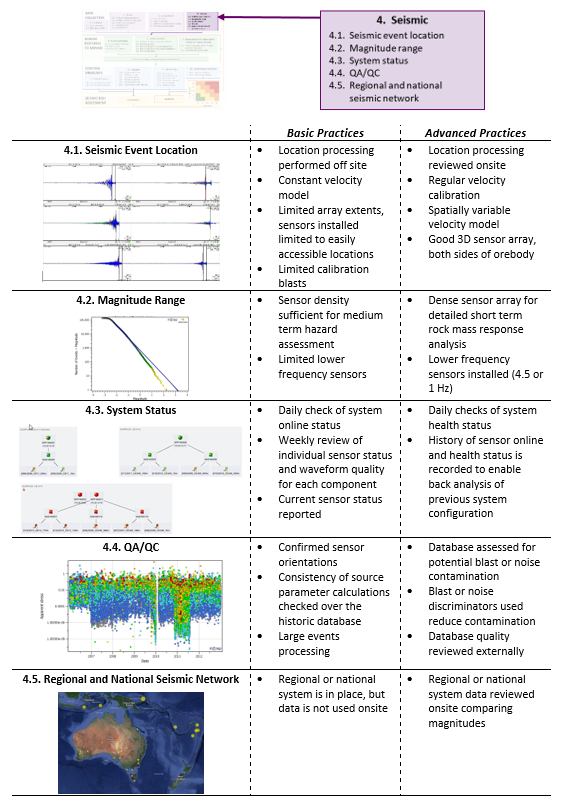4. Seismic
Several seismic parameters are essential in understanding seismic trends; these include event time, event location, event size, and other source parameters. The quality of the data is vital in ensuring the accurate description of seismic trends seen at mines.
The recording of seismic events is a complex process. Several steps are required before the waveform data is converted into an event catalogue for further visualisation and interpretation. Figure 14 illustrates the event catalogue ‘production line’; from the wave (1) propagating through the rock mass around excavations (2), picked up by a seismic sensor (3), then recorded (4) and transferred (5) to the seismic server (6). Once recorded on the seismic server, source parameters are calculated with algorithms (7) and manual waveform processing (8). Finally, this results in an event catalogue for further visualisation and analysis (9). Each of these steps allows some room for error and uncertainties. As a result, the seismic network administrator faces numerous challenges when ensuring the quality of seismic data and systematic errors in the recorded seismic data is not uncommon.
4.1 Seismic Event Location
4.1.1 Seismic event location - basic
The location of a seismic event is determined by finding its distance from all the seismic sensors used for its processing. The event epicentre is assumed to be a point source where all the distance spheres of the sensors intersect. However, to effectively determine the distance, one requires the P-wave and S-wave velocities for the rock mass. The most common practice to determine the S-wave and P-wave velocities is through calibration blasts. A calibration blast is the firing of a small amount of explosives at a pre-surveyed location. From the relative arrival time of the P-wave and S-wave at each sensor, a velocity distance plot (Figure 15) can be constructed, and the average P-wave and S-wave velocities can be determined. This method works well in a rock mass where there are no excessive voids and there are no large differences in wave velocities between lithologys.


